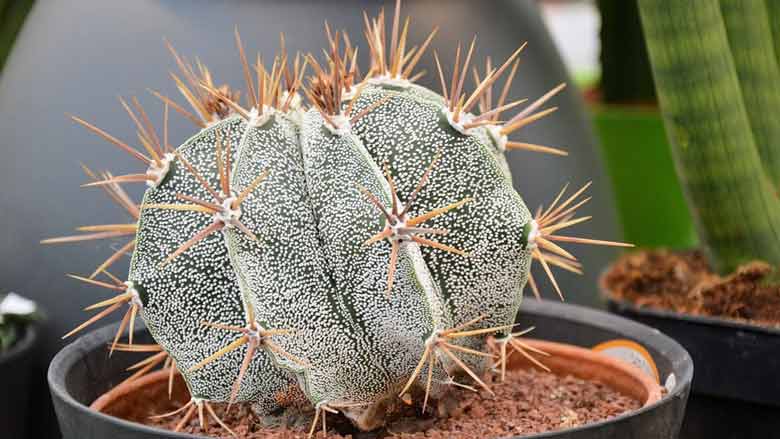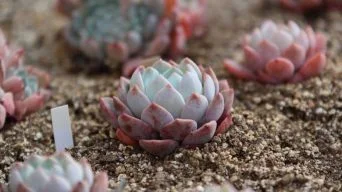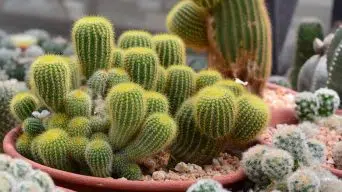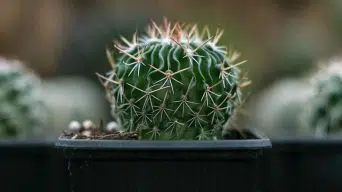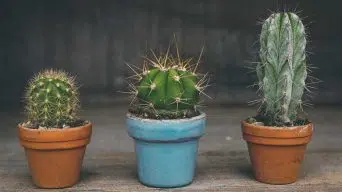If you’re looking for an easy way to add a touch of greenery to your home, growing cactus plants from seed may be the perfect option for you!
Cacti are desert plants that don’t require a lot of water or care, making them the perfect choice for beginner gardeners.
In this article, we will provide a step-by-step guide on how to grow a cactus from seeds.
You will be able to grow a cactus from seeds with little effort successfully, and no experience required.
How Long Do Cacti Take To Grow From Seed?
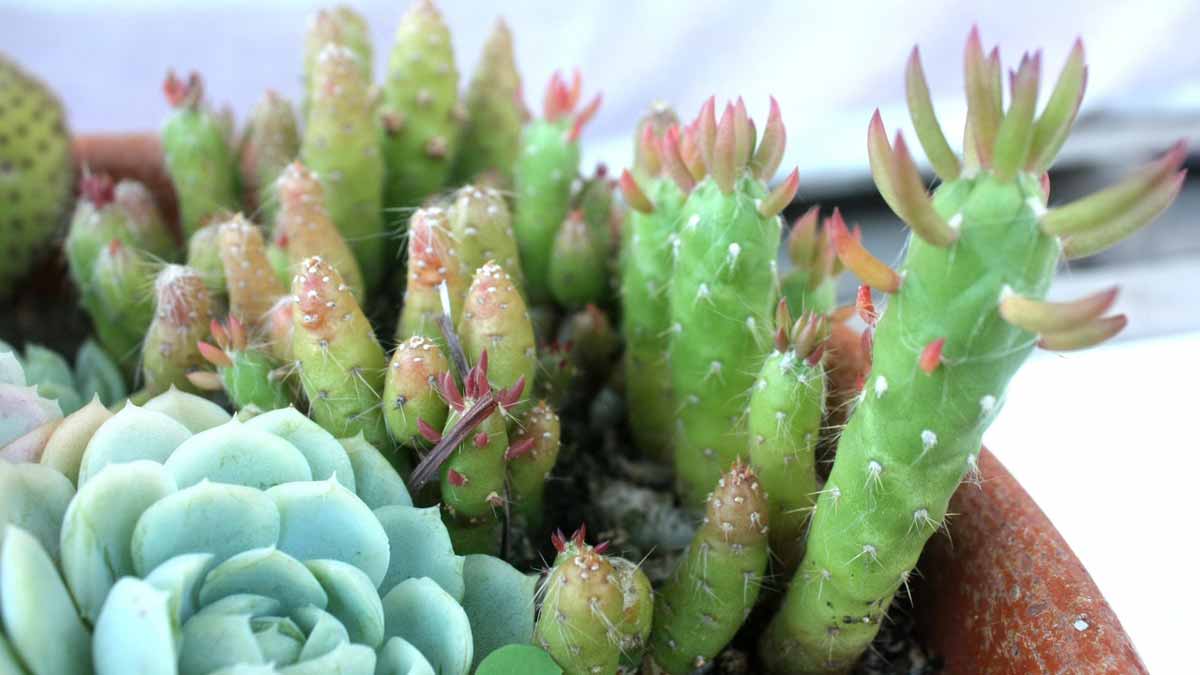
When growing cacti, in general, the seeds will take anywhere from 3 weeks to several months to germinate.
The time it takes for cactus seeds to grow varies depending on the species and the growing conditions.
Most cacti seeds will germinate within three weeks, but the seedlings are fragile and need to be kept warm until they develop enough strength.
When cactus seeds germinate indoors or in a shaded area like a balcony, they sprout faster than when planted outdoors.
The seeds will sprout in a few weeks because of the controlled environment inside your home.
The seeds will take longer when germinating outdoors because many variables can affect their growth.
Best Time of Year to Plant Cactus Seeds
The best time to plant cactus seeds is late winter, spring, or early summer.
These times of the year are warm enough for the cacti to grow and develop strong roots before they go into dormancy during cold weather months.
In a warm, frost-free environment, you may grow cactus seedlings at any time except during the height of summer.
The essential thing to remember is that the seeds should be kept at a minimum temperature of 70 degrees Fahrenheit (21 Celsius).
In general, cacti prefer warm weather and dislike cold weather.
That’s why it’s important to plant them during the right season so they can get a good start and thrive in their environment.
How To Grow Cactus Plants From Seeds
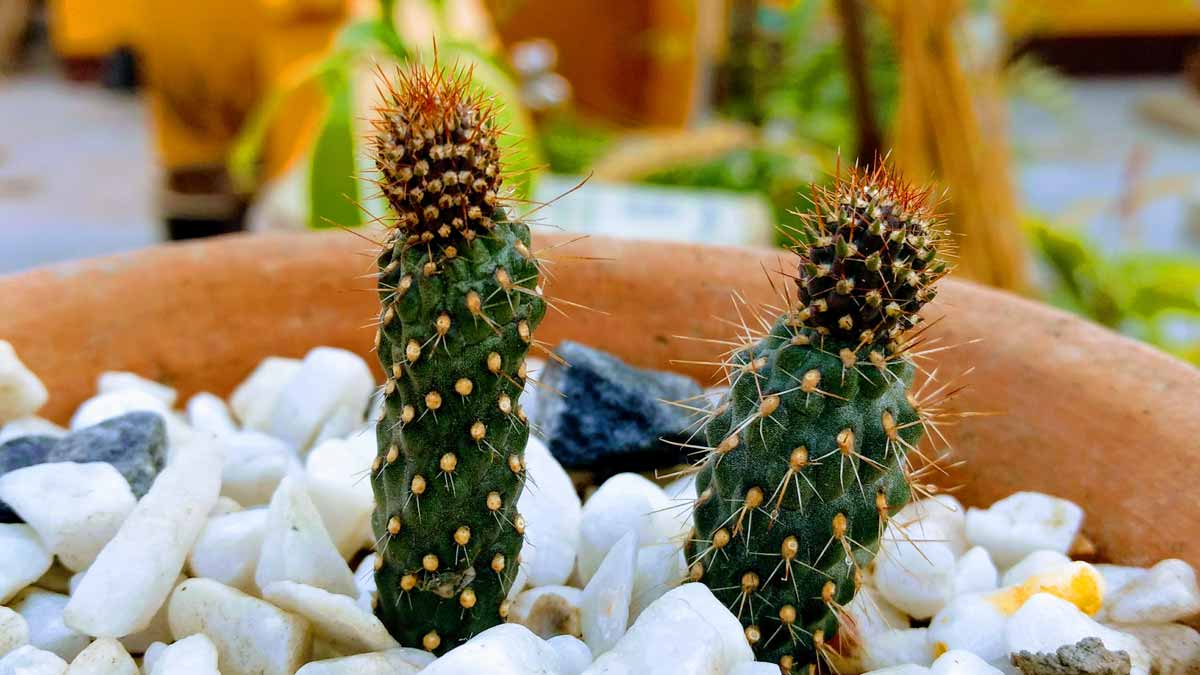
Now that you know when to plant your cactus seeds, it’s time to learn how to grow them.
Here is a step-by-step guide on how to grow cactus from seed:
1. Collect and Prepare the Seeds
Before you can plant cactus seeds, you need to collect them from a healthy cactus plant or a reputable seller.
It’s essential to use fresh and healthy seeds for planting, as old or damaged seeds may not germinate.
If you’re collecting the seeds from a cactus in your garden, remove them from the plant carefully so you don’t damage the mother plant.
Mostly, the seed pods are brightly colored off-shoots that produce flowers. They will be located near the cactus base or on the stem.
The ideal time to sow your cactus seed is in late winter or early spring when they will have enough time to grow during the summer.
If you’re buying seeds from a store, make sure to get them from a reputable seller who has a good reputation for selling high-quality seeds.
When selecting cactus seeds, it’s important to choose species that are native to your area or climate.
This will ensure that the plants have a better chance of survival and thrive in your environment.
Once you have the seeds, it’s time to prepare them for planting.
1.1 Soak the Seeds
The first step is to soak the seeds in water for 30 minutes. You can either use a bowl or Ziploc bags to soak the seeds.
After soaking, you need to clean off the pulp left on the seeds.
You can do this by gently rubbing them between your thumb and forefinger.
This will help remove the protective seed coat and increase the chances of germination.
If there is any remaining pulp on the seeds, you can clean it off with a toothbrush or Q-tip.
1.2 Stratify the Seeds
Stratifying the seeds is a process that simulates winter conditions for breaking seed dormancy to stimulate germination.
It’s important to stratify the seeds for 4 to 6 weeks before planting.
You can do this by placing the seeds in a Ziploc bag or container and adding a handful of potting mix.
Then place the container in the refrigerator for at least four weeks.
Make sure to keep the seeds moist throughout this period.
It’s important not to leave them in the refrigerator for longer than four weeks because this can cause mold growth on the seeds!
If you’re stratifying the seeds outdoors, you can bury them in soil or sand and keep them wet.
If you live in a cold area, you can leave the seeds outside for winter weather to stratify them naturally.
2. Choose the Right Pot or Container
Once you’ve stratified the seeds, it’s time to choose the right pot or container for growing them.
A clay pot is ideal as it helps regulate the soil’s moisture levels. Ensure the pot has a drainage hole in the bottom so that excess water can escape. If you don’t have a clay pot, you can use any other type of pot that has a drainage hole.
You can use small plastic pots that are at least three inches deep and have drainage holes in them.
Another option is to put the seeds in a container or tray with drainage holes and then transplant them later into individual pots.
You can also use a seed tray with cells for planting cactus seeds.
If you choose this option, ensure each cell has its own drainage hole so excess water doesn’t pool in the tray.
It’s important to clean the pots and trays thoroughly before using them to prevent pests and diseases from damaging the seeds or seedlings.
Finally, you can sow cactus seeds directly into a garden bed or container with well-draining soil.
If you choose this option, create mounds of soil so water doesn’t pool around the roots and cause them to rot.
3. Prepare the Soil
After choosing a pot or container for your cactus seeds, it’s time to prepare the soil.
You can use a store-bought succulent and cactus soil mix or make your potting mix by combining potting soil with perlite or grit and sand.
When the soil has been thoroughly mixed, it’s time to sterilize it. Cactus problems such as bacteria and mold can wreak havoc on your seedlings.
The soil mix can be sterilized by baking it in the oven at 180 degrees Fahrenheit for 30 minutes.
Make sure to let the soil cool down before planting the cactus seeds.
4. Planting Cactus Seeds
Once the soil has been prepared, it’s time to plant the cactus seeds.
Before planting, water the soil well and let it drain out completely.
On top of the soil, spread the cactus seeds and then sprinkle a light layer of succulent and cactus mix or sand over the top.
Do not bury the seeds, as they have little stored energy, and burying them will only decrease their chances of germination.
Next, cover the container with a transparent plastic bag to maintain a high humidity level.
Make sure to poke a few holes in the bag so that fresh air can circulate.
Keep the soil moist by adding water when needed, but don’t overwater, or you’ll drown the seeds.
Place the pot in a warm, bright location. Cactus seeds must have both light and warmth to germinate.
A sunny window is an excellent location, but be cautious that the sunlight is not too strong or too intense, as this might cause damage to the seedlings.
Cacti must have a temperature of between 70°F and 90°F to germinate.
After a few weeks, the first seedlings should appear.
5. Care for the Seedlings
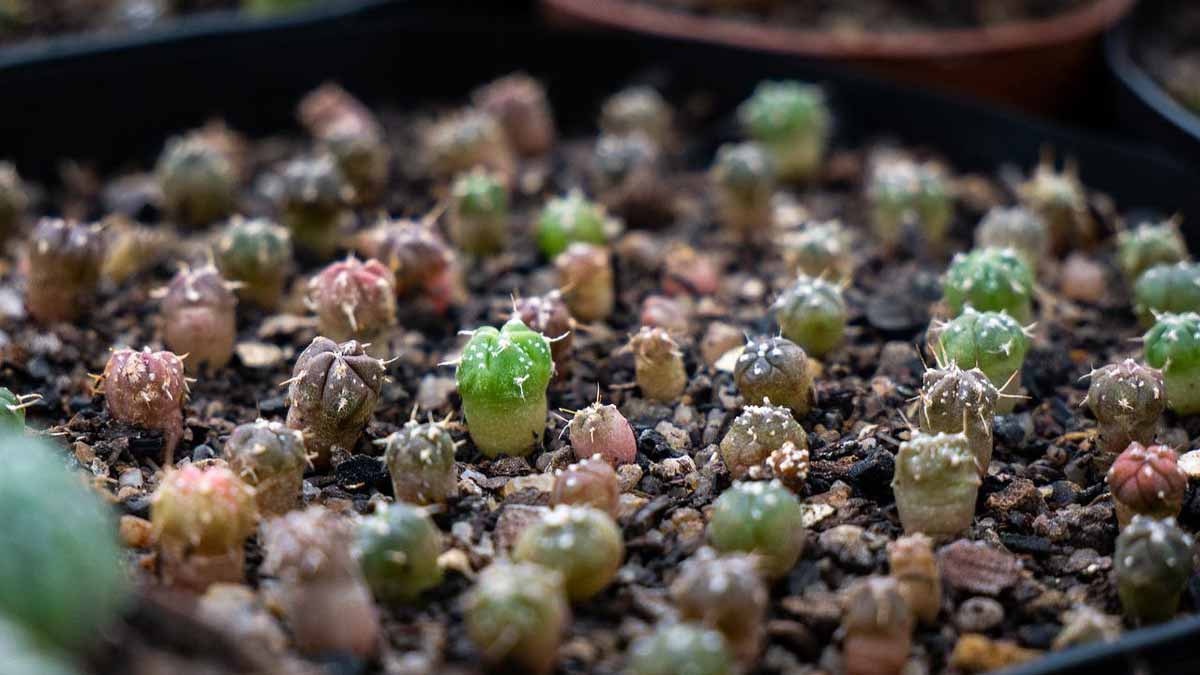
Once the cactus seeds have germinated, remove the plastic bag so that fresh air can circulate freely around them.
Water the young seedlings when the soil feels dry to the touch, but be careful not to overwater them. Provide plenty of bright light, and if the weather is cold, move the pot to a warm location.
Cacti are slow growers, so don’t be discouraged if your seedlings don’t seem to be growing very fast.
6. Transplant the Cactus Seedlings
Once the cactus seedlings have reached a size of about two inches tall, it’s time to transplant them into their own individual pots.
It’s essential to use pots with drainage holes for each seedling. Terracotta and unglazed ceramic pots are the best types of pots to use.
Other containers can also be used, but the most important thing is to get one that drains water quickly.
Fill each pot with a good quality succulent or cactus mix, or make your own mixture by combining equal parts of perlite, grit, and sand with regular potting soil.
Water thoroughly after transplanting and then water as needed when the top inch of soil feels dry to the touch.
If you notice any sign of rot, such as water collecting around the pot’s base or on top of the soil, reduce watering frequency.
Cactus plants can experience root rot when subjected to excessive watering.
It’s also important to provide plenty of bright light for your seedlings after transplanting them into individual pots.
Most cacti prefer bright light, although some varieties can tolerate partial shade.
Give your seedlings lots of sunlight and plenty of room to grow-cactus plants, like a lot of space between them for good airflow.
Final Thoughts
If you’re looking for a fun and easy gardening project, why not try growing cactus from seed?
Cacti are an excellent choice for beginner gardeners, as they are relatively low maintenance and can thrive in various climates.
Growing cactus from seeds is a relatively easy task that requires a bit of patience.
By following these simple steps, you can successfully grow cactus plants from seedlings and enjoy their beauty and succulence for years.

